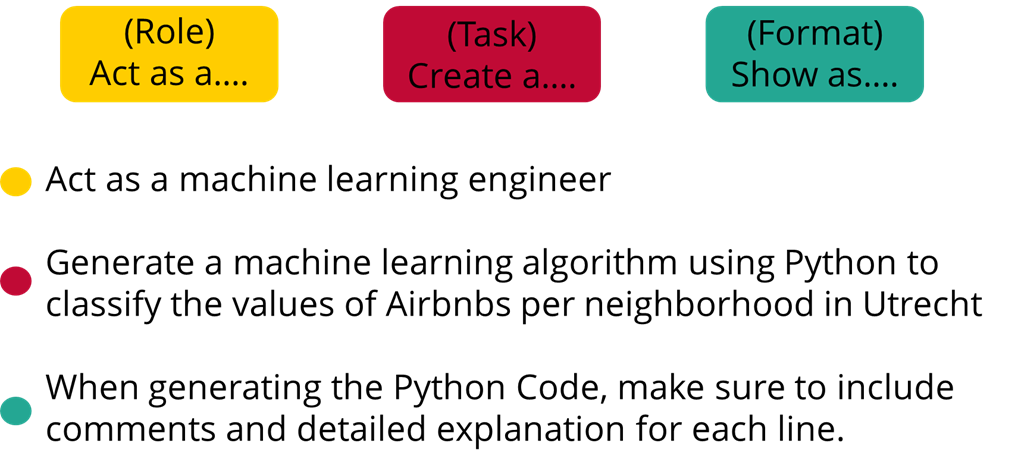Crafting Queries
This tips and tricks was inspired by a post by the profile evolving.ai on Instagram.

A prompt that gives you accurate output should have several components. Each of these components has a different level of importance when you are writing a prompt. As general advice, the following order can generate an accurate output:

- The role or persona you are assuming
- Student
- Developer
- Researcher
- A CFO at a Circular Economy oriented company
- The context
Any information that constrain the generated answers to your goals and situation. For instance:
I am an 80 kg male. I want to gain 5 kilograms muscle in 5 months by going two training sessions per week. Give me a 5 month training program to follow.
The blue part provides a context (background+goal+situation) for the task (green part). - The task or action you want the GPT to undertake
- Compare and contrast concepts
- Find similar things to an idea or product
- Outline a template for a new document
- An example
- Like the UN Climate Report…
- Using the review articles in the journal Antipode as an example…
- Create a workflow like the one for brewing tea in the standard ISO 3103 for…
- The format of the output you want
- Image
- Table (Columns, fields)
- Document (Markdown, Latex, HTML)
- Code (Python, R, Matlab)
- The tone, you can use moods or adjectives to describe the tone that you want like:
- In formal or casual…
- In a cartoon style…
- In the writing style of…
- In a mournful tone…

The R-T-F Method


